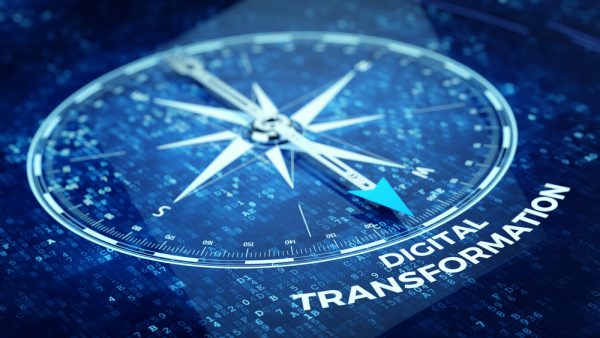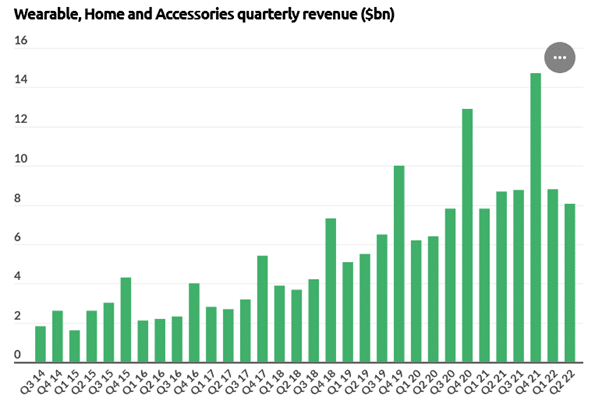Next wave of digital transformation: What should you know?

We’re all witnessing how the second wave of digital transformation (DT) or the so-called "digital transformation v2.0" is gaining steam. How does it differ from the primary version and what should you expect from it? How can it impact your digital strategy and what top priorities should you focus on?
91 percent of organizations have already implemented at least some digital initiatives, while the global spending on DT has passed a 1.5 trillion threshold and is predicted to reach 2.8 trillion by 2025. Sooner or later, every business that wants to survive the competition will face this next wave of digital transformation inevitably. What is it like and how to prepare for it to get transformed painlessly? Let’s get your ducks in a row so that you’re ready for the next step in your DT journey.
Digital Transformation Version 2.0 Explained
What’s the Second Wave of Digital Transformation?
If the first wave of digital transformation was centered on people interacting with tech tools, finding data, and using info to their benefit, the second wave of digital transformation is about operations between tools themselves and making them more flexible to enable faster manipulations with data and decision-making processes.
Cloud-based applications, business automation tools, and smart devices gave users more freedom and access to information. Now, the main point of the next wave of DT is to make a move from informational technologies to operational technologies.
What does this mean?
It implies that machines have come into the spotlight with the necessity to empower them for more efficient interactions between each other.
Why is it so and what has provoked the change? Read on.
What Has Caused the Reboot?
The majority of brands started advancing their digital transformation and building their own products due to the advent of COVID-19 and unexpected eCommerce challenges that arose during the pandemic. However, the coronavirus itself wasn’t the reason for the new wave of DT. It was rather a perfect time to whip up small firms and enterprises to climb on the wave faster so as not to let their businesses get drowned.
In fact, the growing demand for even more rapid solutions and agility appeared even earlier than the COVID-19 outbreak. With tech advancements that made an irreversible impact on digital consumer psychology and the information pool expanding daily, the higher speed of life and the sense of urgency and scarcity nourished digital consumerism and provoked the second DT revolution.
Some organizations are already riding the next wave successfully to stand out from the competition.
Who Has Hopped on the New Wave Already?
A number of companies have proved to be more successful in embracing the next wave of digital transformation than others. Let’s look at the top three business categories that nailed it:
● eCommerce
Compare the revenues per second: $7,300 and $14,900.
That’s how much approximately Amazon earned three years ago and is earning now every single second, correspondingly. At the beginning of 2022, this whale in the digital ocean boasted of a $1.6 trillion market capitalization.
What is Amazon’s income-booster? A powerful DT strategy, of course.
Amazon controls nearly a third of the cloud ecosystem globally with Amazon Web Services. Not to mention its cloud-based voice service, Alexa, and the profits it generates (you’ll see those in a few paragraphs).
● Banking and investment
Jarret Austin, Owner of Bankruptcy Canada Inc., explains how the second wave of digital transformation is modifying financial services. He says that "The next version of digital transformation facilitates modern banking by hyper-personalizing customer experiences, bringing down costs, driving operations in the blockchain (that, in turn, underpins the cryptocurrency), and securing transactions. As for the latter, ATMs, for example, are packed with CCTV systems and facial recognition software to detect possible fraudulent activities. If we talk about investments, robo-advisors like M1 Finance, Wealthfront, or SoFi Automated Investing are on the peak of their popularity, as they offer personalized algorithmic approaches and utilize predictive analytics to automate financial planning."
● Infrastructure and transportation
Thames Water, for example, splashed $1.3 billion on its new digital transformation dive. The agency created a real-time nervous system to monitor their underground water pipe network with acoustic loggers and sensors.
Then there are Tesla’s driver-assist systems and full self-driving software in cars that have rocked the transportation world. Remarkably, they brought Tesla $5.5bn in revenues in 2021 which topped the previous year’s record of $3.47bn.
Catching Digital Transformation’s Second Wave: Top 5 Trends To Hold On To
1) Edge computing systems
Edge computing is processing and analyzing data closer to the edge, namely, the point where it gets created. It implies transition from traditional data centers to edge servers that enable quick insights, response time improvement, and round-the-clock availability.
By 2025, as estimated by Gartner, 75 percent of all information will be processed not in a centralized far-away server but rather in the closest proximity to the end-user. So, basically, this technology drives an application and its user closer to the data source such as a local edge server or an Internet of Things (IoT) device.
Edge computing and IoT
"As a smart home is becoming a new norm, IoT edge computing devices are popping up like mushrooms after heavy rain," says Daniel Apke, CEO of Land Investing Online
"Apple HomeKit, for instance, has brought convenience to users’ homes and a considerable revenue boost to the company. And it looks like Apple won’t ever stop jumping on the waves of digital transformation. It’s changing the sphere of entertainment too with its IoT-oriented approach. Just two years after the release of AirPods, Apple introduced HomePods in 2018. And in 2021, their year-to-year sales nearly doubled," Jesse notes.
The division of Apple’s IoT-based home and wearable devices together grew by 25 percent in 2021. The brand experienced a 243 percent revenue growth in this segment only.
IoT and wearable technology in business go hand in hand to drive innovation forward and snowball the power of digital transformation hitting the world with its second wave.
Edge computing and augmented reality (AR)
Edge computing technologies have breathed new life into AR. Now, the focus has shifted towards adaptive mobile AR and hyper-connectivity.
IKEA, for example, has been holding on to this new eCommerce trend since 2020. The company created the IKEA Place app that allowed customers to virtually furnish their rooms by placing true-to-scale 3D models in their own space and testing IKEA’s products in real time. The result wasn’t long in coming: the application boosted sales by roughly 50 percent.
Edge computing and smart adverts
A new trend in advertising is based on the concept of smart sensors that can analyze data and react to changes.
You may take advantage of reactive marketing to strategize and oversee your ad campaigns in order to achieve customer-centricity and win your audience over. Actually, that’s what La Redoute, a French fashion retailer, did. They installed a thermo-reactive billboard that showed the right clothes for specific weather conditions, based on automatic sensory analysis. The brand saw a 34 percent traffic boost on their site, even though the ad was demonstrated offline, while the sales increased by 17 percent during the campaign.
Why not reconsider your digital marketing strategy and make it more responsive?
2) Artificial intelligence (AI)
AI is literally driving the next wave of global DT. Businesses adopt artificial intelligence to decrease operational costs, boost revenues, and engage with users/customers.
A good example of AI usage is Amazon’s virtual assistant Alexa. It appeared to be the best-selling item and helped Amazon uplift its profits from $1.86 billion to $3.03 billion in one year only.
3) Transition from DevOps to DevSecOps
According to Ben Michael, Practicing Lawyer and Founder of Michael & Associates, "Data breaches and leakages accelerated the need in cybersecurity. That’s why the new wave of DT is characterized by a DevOps-to-DevSecOps shift. The DevOps mindset presupposes a smooth coordination of development and operations. The DevSecOps practice has an extra layer -- security. So, at this point, you should give due importance to three aspects already: development + security + operations."
Peter Robert shares the tips on how to make this transition:
- Hire professional security system developers
- Work out a strategy for DevSecOps
- Create a dedicated framework and a center of excellence
- Maintain a secure coding approach
- Foster a culture of security through transparent collaboration and shared intelligence
- Add security into each segment of your company
4) Flexible automated solutions
77 percent of US shoppers prefer to buy online from brands that value their time, while 55 percent of them are likely to leave if they can’t find a quick answer to their question. Around 1.4 billion people leverage the power of chatbots.
According to Michael Nemeroff, CEO & Co-Founder of Rush Order Tees, "Higher-level automation of today enables self-service without human intervention and reduces customer churn. It goes without saying that the new automated solutions for self-service are driven by artificial intelligence and machine learning: AI customer service live chats, virtual receptionists, interactive self-ordering kiosks, and so on."
Consider highly-specialized software companies with cutting edge technologies to save time, automate routine tasks, and bring your digital transformation to the next level.
Additionally, you might be interested in emerging CRM systems, ERP software development, etc.
5) Purposeful rebranding and redesign
Indeed, rebrands pick up pace.
Facebook, for example, has rebranded to Meta recently anticipating the rise of the Metaverse.
What can be the major goal of rebranding and why is it a go-to solution, if you want to catch an even higher wave of digital transformation?
A well-though rebranding strategy helps companies achieve the following:
- Transform post-pandemic
- Reflect the digital transition itself
- Diversify business
- Engage with customers
- Personalize user experience
"Opening the second door of total digital transformation, purposeful web redesign is a must," believes Anthony Martin, Founder and CEO of Choice Mutual.
"At ChoiceMutual, we changed our website dramatically to individualize user experiences and stick to an all-digital transition. Among other things, we added an automated cost calculator to help customers estimate expenses and determine insurance needs on the spot. Besides, we implemented the Accessibility Adjustmentswidget for our site visitors. It includes suggested accessibility profiles (seizure safe profile, ADHD-friendly profile, etc.), as well as content, color, and page layout options for different tastes and needs," Anthony mentions.
Engaging UX and UI should be well-blended with functionality and seamless operability. To get a perfect mix of features, functions, operational capacities, and modern outlook, you may seize the advantages provided by web design services.
Jump on the Next Wave and Get Digitally Transformed to the Fullest
The second wave of digital transformation has brought opportunities to expand your brand’s potential and explore new horizons with innovative technologies. It also gives you a chance to enhance personalization of customer experiences and increase profitability, among other things.
Following at least one of the trends above, you can grow your business in no time and thrive in the digital age.
Image Credit: Sashkin/Shutterstock

Roman Shvydun writes informative articles mainly about everything related to marketing, business, productivity, workplace culture, etc. His articles focus on balancing information with SEO needs, but never at the expense of providing an entertaining read. See a few more examples of Roman’s articles by visiting his Twitter: https://twitter.com/Roman27561221


